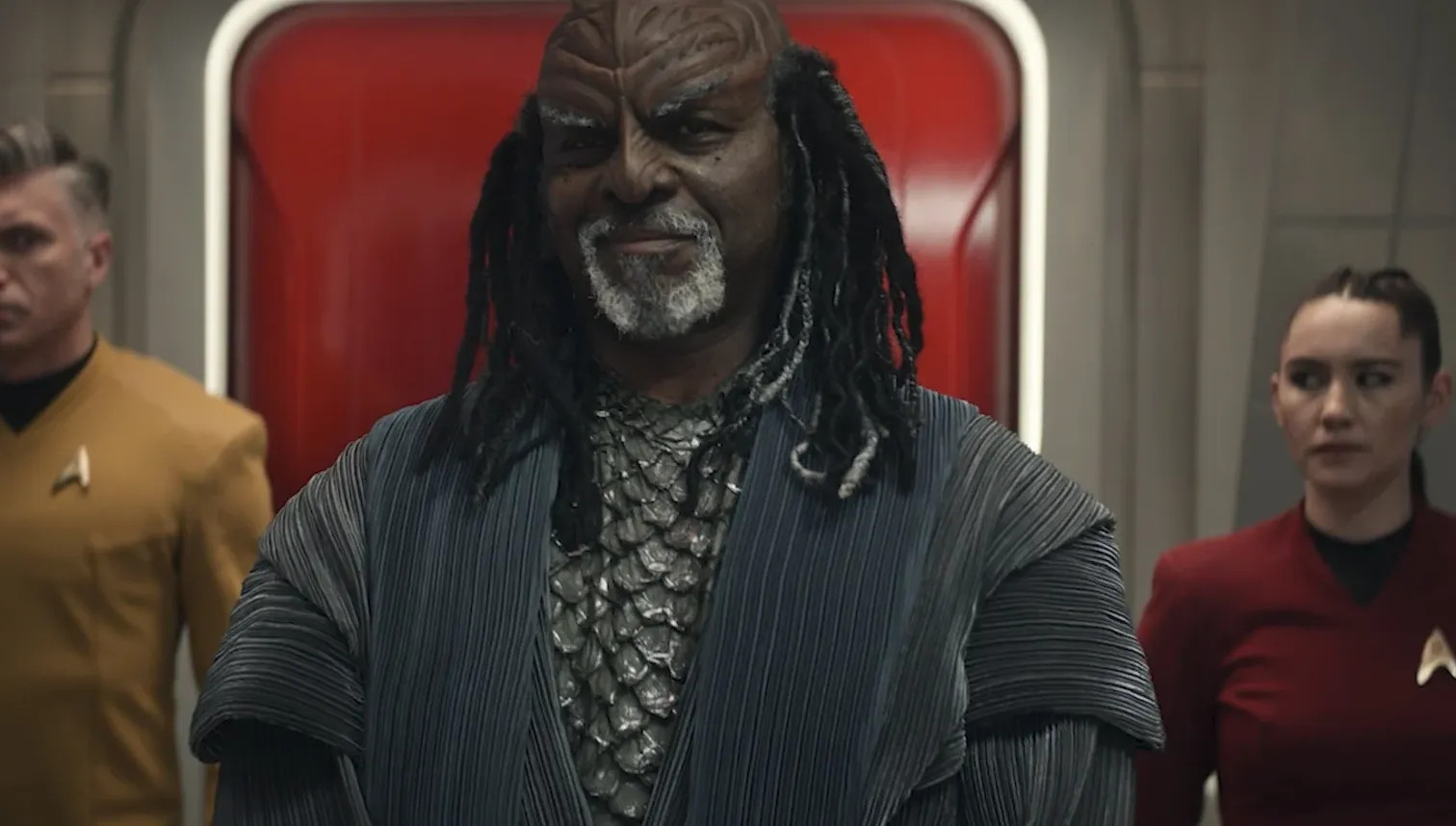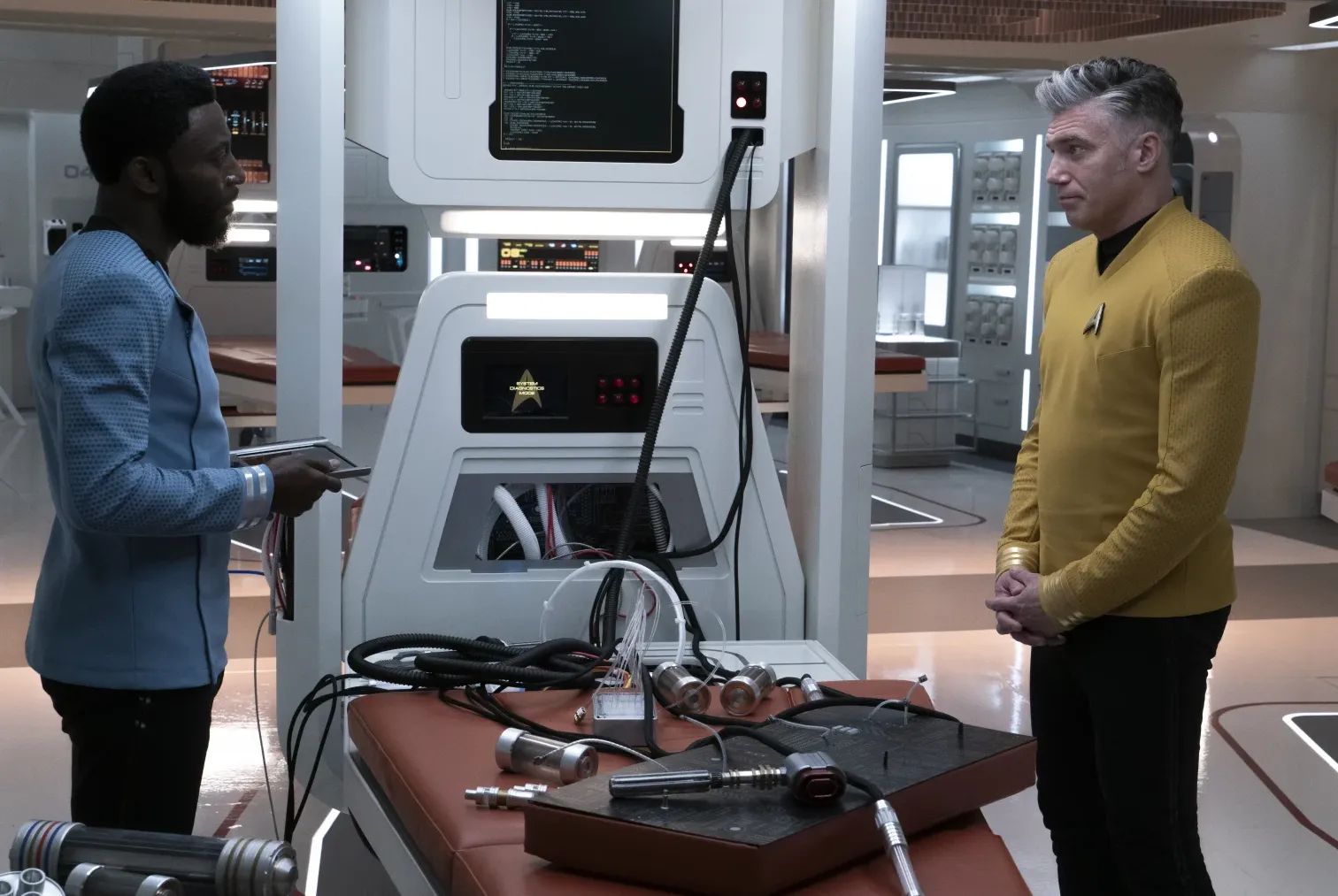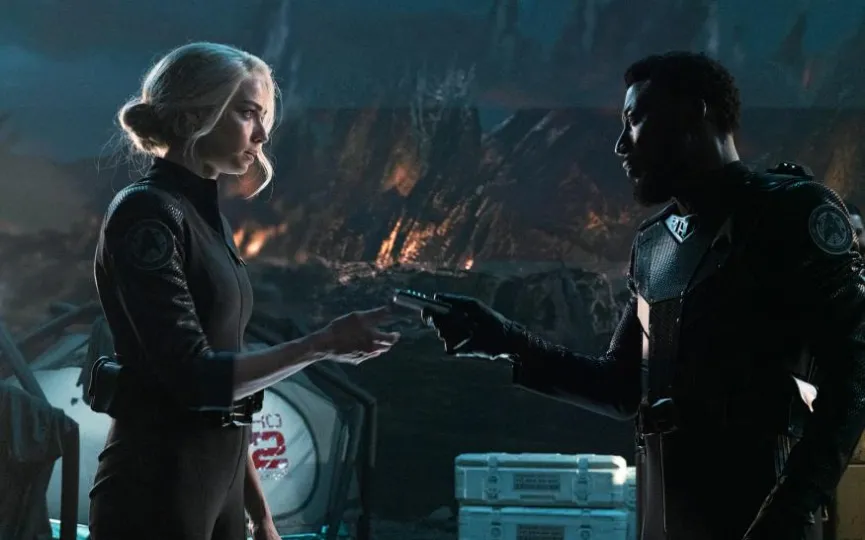Exploring the Possibilities of Redemption in ‘Star Trek: Strange New Worlds’
Please note that the information provided below includes spoilers for the book “Under the Cloak of War.”
“Some things break in a way that can never be fixed, only managed.” It’s the last line in a powerful episode of Star Trek: Strange New Worlds. “Under the Cloak of War” presents many questions about memory, grief and redemption — echoing this season’s main obsessions — that it fails to answer. For some shows this would be a bad thing, but Strange New Worlds is becoming more comfortable living with ambiguity. Even though I’m color recency biased, I already have a feeling it might be the standout of the season.
The Enterprise has been asked to carry Dak’Rah (Unidentified Robert Wisdom), a successful but deeply controversial Federation emissary in the Prospero system. Controversial due to being a Klingon defector during the recent war, also known as “The Butcher of J’Gal”. Not only because of the orders he gave, including massacring his own civilians, but also because he killed all of his generals right before defecting. Pike, Una, and Uhura embrace Dak’Rah as a beacon of hope for a more peaceful future. But the Ortegas, who fought in the war, and M’Benga and Chapel, who actually served in a field hospital on J’Gal, can’t get over their past or their own pain.
We flash back to Chapel’s arrival at J’Gal, where she is greeted by Clint Howard’s commanding officer who charms Trek’s luck. It takes a full minute for him to orientate before he picks up the victims from the transporter and tries to save them without any major medical technology. One soldier is loaded into a pattern buffer to keep him alive until rescue arrives, while the others are cut down the old fashioned way. M’Benga and Chapel quickly bond during their harsh time in the medical trenches and develop a shortcut to help each other.

Presently, Pike asks all three to tone down their objections and come to dinner with Dak’Rah, who is trying to control the captain’s table. Neither of them can stay comfortable for too long, and the Ortegas quickly go after Chapel. Pike notices that even though M’Benga is standing still, he’s holding onto the arms of his seat so tightly that he’s about to rip them off, and asks him to look at the absent couple. But not before Ra, knowing that M’Benga loves martial arts, asks to arrange a session between them with a slightly too aggressive arm.
In J’Gal, M’Benga treats a wounded soldier who wonders what the point of this battle really is. The doctor gives a rousing speech and brings to mind the “you want me on that wall” speech from Aaron Sorkin’s A Few Good Men. He says that the risk of Klingon expansionism is too great and that Starfleet will fight so that others can live their lives in peace. But while effective, the speech is delivered a little too convincingly, especially when we soon learn that M’Benga used to be a guy with a knife and not a scalpel.
Soon after, the Special Forces commander asks M’Benga for something called Protocol 12, the green steroids M’Benga and Chapel use in “The Broken Circle”. While I was annoyed that M’Benga himself created it—I’m never a fan of secret origin stories where the same five characters are literally at the center of the entire universe—I was glad we didn’t get too much of an explanation as to how it came about. The Doctor refuses, so the Commander asks if M’Benga himself, under his old mask of “The Ghost”, will join the team on its daring mission, given how effective his killing skills are or were.
The army plans to send a small unit to try to destroy J’Gal’s leaders once and for all, while committing most of its forces to a large frontal assault as a distraction. The soldier M’Benga, who was patched up earlier, goes back there to be chopped up, because everyone knows in advance that they will be sent to the meat grinder. But the Klingons are ready for them, disabling the field hospital’s power generators, preventing them from rescuing casualties as they pile up. Chapel gets the transporter online, but can’t activate it without wiping out the soldier previously held in the pattern buffer, which M’Benga does with little hesitation.
Back on the ship, M’Benga and Dak’Rah begin a sparring session with Dak’Rah doing his best to try and make nice with the doctor. He talks about how good the symbolism would be of two former enemies, literally on opposite sides of the same battle, standing side by side. But M’Benga cannot become friends, only allies, and soon begins asking Dak’Rah which of his generals fought the hardest on his last day in J’Gal. Dak’Rah can’t answer because Dak’Rah didn’t kill them, it was M’Benga who jumped on his own rage steroids and sought revenge.
The Enterprise takes a shortcut to get its unwanted Klingons off the ship before anyone gets hurt, but not before Dak’Rah goes to M’Benga again. The Doctor examines a small personal item containing a D’k tahgi, which he thought was a reminder of J’Gal. They discuss the fallout from their previous conversation, with M’Benga angry that Dak’Rah has used M’Benga’s deaths to wash his own reputation. We then cut to the other side of the doctor’s office, through partially opaque glass as the pair fight, before cutting to Dak’Rahdead on the floor with a dagger in his chest.
Chapel defends M’Benga by saying that Dak’Rah caused the fight, to which M’Benga agrees despite being pressured by Pike to plead guilty in record-breaking terms. He tells his captain that he’s not responsible, but he’s happy to have his old enemy as a reminder from J’Gal. They discuss the fallout from their previous conversation, with M’Benga angry that Dak’Rah has used M’Benga’s deaths to wash his own reputation. We then cut to the other side of the doctor’s office, through partially opaque glass as the pair fight, before cutting to Dak’Rah dead on the floor with a dagger in his chest.

If there’s one thing Star Trek (both then and now) can sometimes forget, it’s that history doesn’t just happen to other people. Although it focuses on the great people of history doing soliloquies on the bridge of their starships, it’s the beginning of things, not the end. Despite its apparent progressiveness, it rarely engages on such a level with the material concerns of ordinary people living and serving in Starfleet. That’s why the fact that we got to see the Klingon war from somewhere close to Earth is a refreshing change.
And at the beginning of the season, I talked about how confident the storytelling of Strange New Worlds had become. The production team, which exploded right out of the gate, lifted even its weaker episodes, which pushed in the same direction at their hardest. With a strong script credited to writer/producer Davy Perez and directed by Jeff W. Boyd, not much can go wrong. It also helps that this year Strange New Worlds has curbed its desire to explain and exaggerate every aspect of the event. But what really makes this episode is Babs Olusanmokun’s stellar performance as Dr. M’Bengana, who once again proves to be this series’ secret weapon.
Olusanmoku holds together the broad ideas of this manuscript, including the central questions of memory, grief, and forgiveness. There is a clear dichotomy between the crew members who are motivated by revenge and those who are looking for a better future. I’m sure a given conflict can be mapped to a number of real-world fault lines, for better or for worse. The episode, wisely, doesn’t necessarily take one side to the other, although the fact that M’Benga and Chapel are our POV characters this week means we’re already on a side.
It’s a shame that less emphasis is placed on making Dak’Rah as complete a character as he could or should be. He’s given no room to justify Pike’s faith in him, and it’s clear from the moment he arrives that he’s ever so slightly phony. Much of this can be attributed to the old age of our nemesis and the fact that the storytelling in Strange New Worlds is much more ambitious this time around. But I’m never going to criticize a series for having too many ideas and not enough time to explore them all in sufficient detail.
Oh, and I wanted to point out Strange New Worlds’ excellent use of virtual stages, both here and throughout much of the season. J’Gal’s world feels quite believable, and it is presented in the flashback sequences as a living background behind the field hospital. Considering the cost and logistical demands of a series of night shoots in rough terrain, I can understand why the team decided to shoot the scene in a studio. But even with sharp-eyed fans searching the edges of the stage, the atmosphere feels much more real than if they were acting in front of a green screen.
Now it’s clear that each season of Strange New Worlds follows a similar format during its run. After the mission-setting premiere, you get three episodes that explore standard Trek tropes, focusing on Una and La’an. Episode 5 is a spock-heavy romantic comedy followed by a heavy episode that highlights the overall theme of the season. Seven is a lighter episode, while eight focuses primarily on Dr. M’Benga, while nine is one of two big showcase episodes that close out the season. And I’m hoping to get credit for watching the musical episode last year, which is what we’re getting next week.




